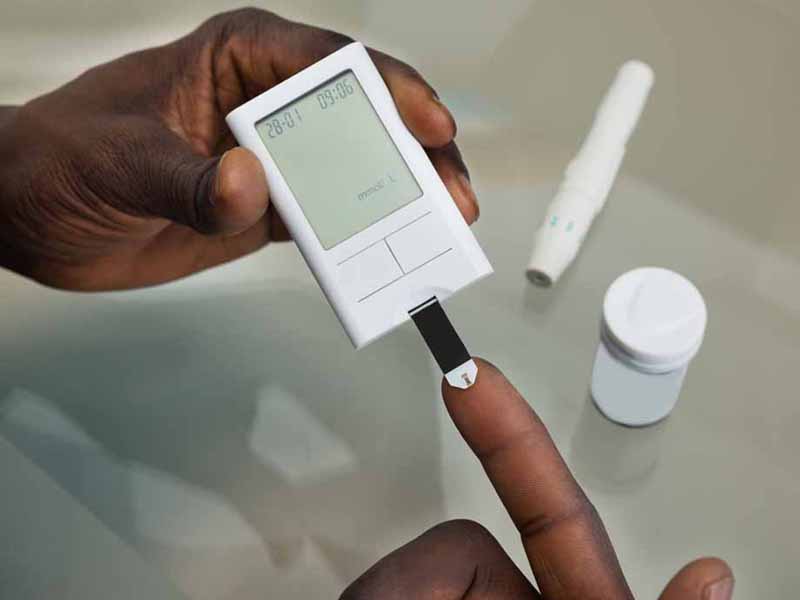NDEP Updates Guiding Principles for Diabetes Care
September 05, 2018, 01:29 pm Chris Crawford – The National Diabetes Education Program (NDEP) has released an update to its Guiding Principles for the Care of People With or at Risk for Diabetes, which was first published in 2014.

Although the resource is not a clinical guideline, evidence review, position statement or consensus statement, it does provide 10 principles highlighting areas of agreement in diabetes care and prevention across a broad range of professional organizations.
The AAFP signed on as one of 20 health care organizations and federal agencies supporting use of the principles.
Family physician John Boltri, M.D., of Rootstown, Ohio, represented the AAFP on the core writing and review team, which helped research, write and refine draft versions of the principles document.
"These guiding principles are really geared to practicing primary care physicians," Boltri told AAFP News. "Each section is concise and gives the best evidence that we know today that is usable in a clinical setting."
Guiding Principles
The NDEP's 10 guiding principles are as follows:
- Principle 1: Identify People with Undiagnosed Diabetes and Prediabetes
- Principle 2: Manage Prediabetes to Prevent or Delay the Onset of Type 2 Diabetes
- Principle 3: Provide Comprehensive, Patient-centered Diabetes Care
- Principle 4: Provide Ongoing Self-management Education and Support for People with Diabetes
- Principle 5: Encourage Lifestyle Modification for People with Diabetes
- Principle 6: Address Overweight and Obesity in the Management of Diabetes
- Principle 7: Individualize Blood Glucose Management for People with Diabetes
- Principle 8: Provide Multifactorial Cardiovascular Disease Risk Reduction
- Principle 9: Detect and Monitor Diabetes Microvascular Complications and Provide Treatment to Slow Their Progression
- Principle 10: Consider the Needs of Special Populations with Diabetes
Boltri highlighted some of the useful information the guiding principles resource offers.
Story Highlights
First, he said the Principle 1 chapter on when and how often to screen for diabetes is especially helpful. He specifically referenced Table 2 on page 7, which lists screening test criteria for prediabetes and type 2 diabetes that can be used as a quick-reference guide.
For Principle 5 on encouraging lifestyle modification for patients with diabetes, Boltri said family physicians will already know and agree with most of the information included in that chapter.
"For example, recommending 150 minutes per week of moderate-intensity aerobic exercise, spread out over at least three days," he said. "But this section also offers practical guidance, such as telling patients to choose low-fat animal- and plant-based protein sources (e.g., lean meat, fish, poultry without skin, eggs, dried beans and peas, and soy products)."
The Principle 6 chapter focuses on addressing overweight and obesity in the context of diabetes management.
"Bariatric surgery for obesity is highly effective," Boltri said. "Patients with diabetes who are very obese will improve if they have the surgery. But it's always challenging to remember the different types of surgery. So, the different types of obesity surgery are summarized very succinctly on page 38."
Current bariatric surgery procedures include laparoscopic adjustable gastric banding, vertical sleeve gastrectomy, Roux-en-Y gastric bypass and biliopancreatic diversion.
Under Principle 7, Boltri recommended that family physicians consult the table on page 48, which covers mean glucose levels for specific A1c levels or target ranges.
"We are following A1c levels more and more now as a marker for how well someone is controlling their diabetes, so this table is useful," he said.
Boltri noted that the same page features a link to an American Diabetes Association calculator for converting A1c results into estimated average glucose in either mg/dL or mmol/L.
Finally, Boltri recommended that FPs take a look at the summary of medications and therapy under Principle 8: Provide Multifactorial Cardiovascular Disease Risk Reduction.
"Most deaths in patients with diabetes result from cardiovascular-related complications," he said. "Principle 8 offers a really good summary of the medications and therapy that should be considered for patients with diabetes."
Good Resource for All Family Physicians
Boltri said diabetes research, including his own NIH-funded work, has been his focus for about 18 years now. However, he said, the guiding principles would be a good refresher even for seasoned family physicians and a great learning tool for medical students and family medicine residents.
"A lot of this information is second nature to me, but we shouldn't assume it's that way for all practicing doctors," Boltri said. "I know with the residents and students I teach, (diagnosing and treating diabetes) can be very confusing."
For example, Boltri said, some new physicians might think that if a patient's random glucose is more than 200 mg/dL, that patient has diabetes.
"This is not true," he said. "It's actually a random plasma glucose of more than or equal to 200 mg/dL with symptoms," which can include polyuria, polydipsia and unexplained weight loss.
Boltri said the guiding principles can be viewed electronically as a PDF file or printed out for quick reference.
"There are still a lot of docs like me who would like to have a hard copy of the guiding principles, but the electronic version allows you to search for specific topics," he said. "The other advantage of using it on a computer is there are a lot of links in the document to external resources that are helpful."
"The guiding principles are a user-friendly resource for a broad range of practicing primary care physicians," Boltri said.
Related AAFP News Coverage
Short-term Inactivity May Trigger Diabetes Symptoms
Effects Seen in At-risk Adults After Only Two Weeks of Reduced Physical Activity
(8/22/2018)
New Diabetes Diagnosis Could Benefit Household
FPs Can Leverage 'Teachable Moment,' Says Researcher
(7/13/2018)
More From AAFP
Diabetes